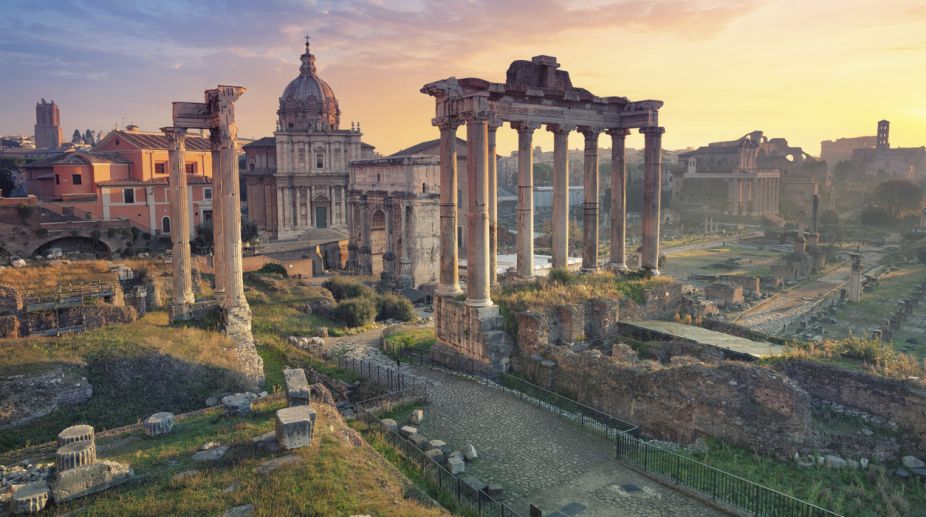Odisha seawater plays host to mating pairs of turtles
For undisturbed breeding of the aquatic animals, prohibition on sea fishing continues to remain in force in the marine sanctuary, said forest officials.

(Photo: Getty Images)
Seawater has made Roman structures – such as the famous Pantheon – stronger over the centuries, say scientists who have discovered the secret behind the resilience of the 2,000-year-old piers and breakwaters that continue to stand today.
Researchers from University of Utah in the US found that seawater filtering through the concrete in the the Roman structures leads to the growth of interlocking minerals that lend the concrete added cohesion.
Romans made concrete by mixing volcanic ash with lime and seawater to make a mortar, and then incorporating into that mortar chunks of volcanic rock, the “aggregate” in the concrete, researchers said.
Advertisement
The combination of ash, water, and quicklime produces what is called a pozzolanic reaction. The Romans may have gotten the idea for this mixture from naturally cemented volcanic ash deposits called tuff that are common in the area, researchers said.
The team found that the conglomerate-like concrete was used in many architectural structures, including the Pantheon and Trajan's Markets in Rome.
Massive marine structures protected harbours from the open sea and served as extensive anchorages for ships and warehouses.
Modern Portland cement concrete also uses rock aggregate, but with an important difference: the sand and gravel particles are intended to be inert.
Any reaction with the cement paste could form gels that expand and crack the concrete, researchers said.
“This alkali-silica reaction occurs throughout the world and it's one of the main causes of destruction of Portland cement concrete structures,” said Marie Jackson, geologist at University of Utah.
Researchers further studied the factors that made architectural concrete in Rome so resilient.
One factor is that the mineral inter growths between the aggregate and the mortar prevent cracks from lengthening, while the surfaces of nonreactive aggregates in Portland cement only help cracks propagate farther, they said.
Another factor was an exceptionally rare mineral, aluminous tobermorite (Al-tobermorite) in the marine mortar.
The mineral crystals formed in lime particles through pozzolanic reaction at somewhat elevated temperatures, Jackson said.
Researchers found that Al-tobermorite and a related zeolite mineral, phillipsite, formed in pumice particles and pores in the cementing matrix.
The pozzolanic curing process of Roman concrete was short-lived. Something else must have caused the minerals to grow at low temperature long after the concrete had hardened.
The team concluded that when seawater percolated through the concrete in breakwaters and in piers, it dissolved components of the volcanic ash and allowed new minerals to grow from the highly alkaline leached fluids, particularly Al-tobermorite and phillipsite.
This Al-tobermorite has silica-rich compositions, similar to crystals that form in volcanic rocks. The crystals have platy shapes that reinforce the cementing matrix. The interlocking plates increase the concrete's resistance to brittle fracture.
The study was published in the journal American Mineralogist.
Advertisement